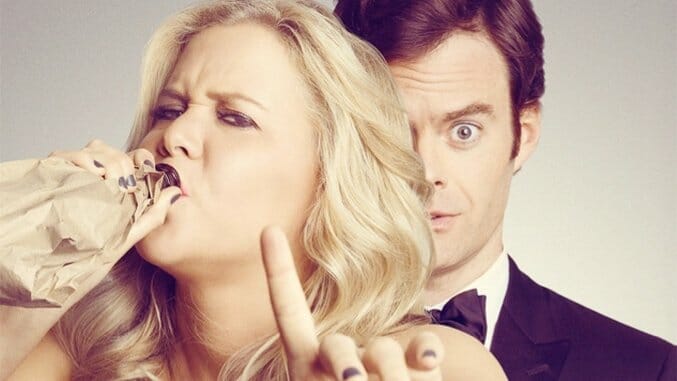
Paul Thomas Anderson’s Inherent Vice, Luc Besson’s Lucy, Martin Scorsese’s Mean Streets and the Amy Schumer/Judd Apatow comedy Trainwreck are all new at HBO this month. So is Jurassic World, a film that I’m sure HBO payed a lot of money for, but one which can’t recommend. Instead here are the 50 best movies available to stream on HBO Go and HBO Now in March 2016:
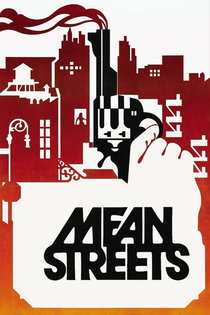 50. Mean Streets
50. Mean Streets
Year: 1973
Director: Martin Scorcese
Of all Martin Scorsese’s gangster flicks, none feel as personal as Mean Streets. The main character, played wonderfully by Harvey Keitel, could very well be Scorsese himself, an Italian-American caught in the middle of two lives: crime and religion. Gritty and vigorous with an exhilarating performance from a young Robert De Niro, the film marks Scorsese’s first great gangster feat.—Paste
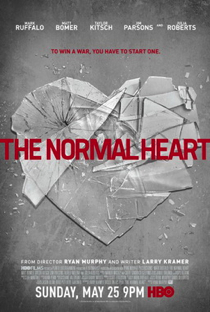 49. The Normal Heart
49. The Normal Heart
Year: 2014
Director: Ryan Murphy
Among HBO’s most prestigious—and star-studded—recent efforts is this 2014 adaptation of Larry Kramer’s seminal 1985 stage play about the earliest, darkest days of the HIV/AIDS crisis in New York City. It’s also among the most necessary. Kramer adapted the teleplay, directed by Ryan Murphy (Glee, American Horror Story), which casts a brilliant Mark Ruffalo as Kramer’s onscreen alter ego, a gay writer who consults with a local doctor (Julia Roberts) about this mysterious, fatal new “cancer” that’s devastating the community and his inner circle of friends (portrayed by Jonathan Groff, Jim Parsons, Matt Bomer, Taylor Kitsch, all excellent). Just as devastating is the ignorance and inhumanity shrouding what was then viewed as a death sentence and, worse, a deserved retribution. Some 35 years after the HIV/AIDS epidemic hit critical mass, and in light of a generational complacency accompanying new medical breakthroughs like PrEP, The Normal Heart is a timely reminder of the physical, emotional and psychological ravages of the disease. Murphy and co. revisit a not-too-far-away era of fear, in which the basic function of breathing the same air—let alone holding someone’s hand—was a gesture of dangerous courage, and compassion. Though it obviously plays much differently four decades vs. four years after Kramer’s original play, the relevance is undeniable, as is his still-coursing anger at the systemic and individual indifference to those affected. Murphy dials down his own flourishes for a harrowing document that needs to be seen.—Amanda Schurr
 48. Trainwreck
48. Trainwreck
Year: 2015
Director: Judd Apatow
Think of Trainwreck as Amy Schumer’s comedy fed through Judd Apatow’s directorial dehydrator…To the credit of both Apatow and Schumer, who wrote the whole damn thing, they’ve made a funny film—and in fairness, “funny” is all that Trainwreck needs to be. When the picture clicks, you’ll be too busy bearing down and expelling laughter to catch any air or worry about politics. Schumer and her colossal supporting cast easily prove that all anyone needs to cut together a solid comedy is good old-fashioned chemistry, sharp delivery, and a surfeit of killer punchlines. —Andy Crump
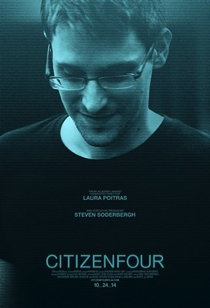 47. Citizenfour
47. Citizenfour
Year: 2014
Director: Laura Poitras
Few documentaries have cameras rolling as history is being made. But director Laura Poitras found herself in the middle of momentous times while making Citizenfour, which takes us behind the scenes as NSA whistleblower Edward Snowden works with (among others) journalist Glenn Greenwald to expose the organization’s systematic surveillance of everyday Americans. From the worried initial meetings in a Hong Kong hotel room to the later fallout across the globe, Citizenfour has the rush of a thriller, humanizing its subjects so that we see the uncertainty and anxiety coursing through them, along with the guts and indignation.—Tim Grierson
 46. Spy
46. Spy
Year: 2015
Director: Paul Feig
Rose Byrne’s comedic talent has always been criminally under-appreciated, as evidenced by Melissa McCarthy’s much broader Bridesmaids performance garnering an Oscar nomination while Byrne’s complex, nuanced, hilarious turn as Helen. This woman can do no wrong, which is proven even more thoroughly by her performance in Paul Feig’s Spy. As Rayna Boyanov, an international fugitive with a mouth like a sailor and a penchant for feeding men poison until their throats dissolve, Byrne’s villainess is the perfect counterpoint for Melissa McCarthy’s titular hero. Spy marks Melissa McCarthy’s third effort with director Paul Feig, following Bridesmaids and The Heat, and the two keep their streak a winning one: Spy manages to be funny, thrilling and empowering all at once. McCarthy plays Susan Cooper, a skilled CIA analyst who finds herself spending her days behind a desk rather than out on missions. It’s a violent action-comedy that never once is able to take itself too seriously, and yet has a lot of serious commentary to lace throughout all of its whimsy about just how powerful any woman can be when given the same resources and consideration as any other male. Spy’s surprise may not be that Susan turns out to be an unassuming hero, but that she is matter of factly a deserved one, the only thing standing between her and unmitigated success being yet another upstanding performance by Byrne.—Andy Herren

45. Batman: Under The Red Hood
Year: 2010
Director: Brandon Vietti
When a violent figure known as the Red Hood throws Gotham’s underworld into chaos, Batman must track down his connection to the late Jason Todd, who became Dick Grayson’s successor as Robin until being beaten to death by the Joker. The darkest and most intense of the DC animated films culminates with a three-way battle between Batman, the Red Hood and the Joker that evokes The Good, The Bad and the Ugly in its conflict between three comparably-matched opponents, each of whom embodies a different moral worldview. It should go without saying that it, like Batman: Year One, is not even remotely for kids.—Curt Holman
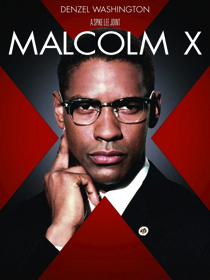 44. Malcolm X
44. Malcolm X
Year: 1992
Director: Spike Lee
“Ya been took! Ya been hoodwinked! Bamboozled! Led astray! Run amok!” When director Spike Lee introduced us to Detroit Red, he reminded the world of a time in American history more readily forgotten by some than others. Based on The Autobiography of Malcolm X, Lee (in typical fashion, with a brilliant score and with the grand influence of French cinema throughout) brought us the story of a troubled boy who could have easily become any unknown black man in the ‘60s—who indeed, almost did, until he committed his life to Allah and The Nation of Islam. Denzel Washington perfectly, eerily embodied the role of the young Detroit Red who would become Malcolm X. As a team, Lee and Washington (along with Angela Bassett as Betty Shabazz) created the perfect biopic, where all that we assumed about an icon was troubled or complicated by this new translation of his life.—Shannon Houston
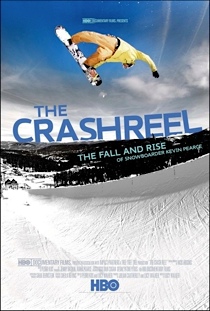 43. The Crash Reel
43. The Crash Reel
Year: 2013
Director: Lucy Walker
Walker’s favored extremity in The Crash Reel is snowboarding, which, as extreme sporting events go, appears rather mild—its traumas and injuries are thoroughly wince-inducing, but compared to, say, wingsuit diving, the mortality rate among its practitioners remains low. But Walker has seized upon snowboarding just as it approaches a newly hazardous precipice, and one of the remarkable things about The Crash Reel is how it chronicles the sport’s sudden drop off the other end. The catalyst, as the Cold War-like dramatics of the form dictate, is rivalry: Kevin Pearce and Shaun White, former friends and embittered adversaries, come to represent the film’s evenly matched hero and villain—Pearce the good-natured underdog on his way up, White the vainglorious champion whose years-long reign seems threatened. Of course, story, in a documentary, is nothing more than a pretense in thrall to the life from which it’s fashioned, and a filmmaker can only do so much to sculpt reality to her liking. But Walker has no need to anyway: here she’s happened upon a real-life conflict of almost inherently cinematic interest.—Calum Marsh
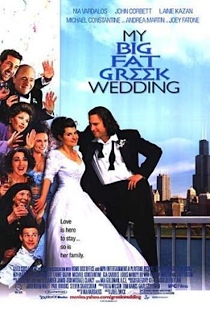 42. My Big Fat Greek Wedding
42. My Big Fat Greek Wedding
Year: 2002
Director: Joel Zwick
The little indie rom-com that could, Joel Zwick’s My Big Fat Greek Wedding was the surprise hit of 2002 thanks to a hilarious, loving portrayal of Greek-American culture that hadn’t been seen much on the big screen. Nia Vardalos plays Toula Portokalos, who to the consternation of her family, is engaged to a decidedly non-Greek man. The clash of cultures is at the center of this funny, sweet and original film based on Vardalos’ Oscar-nominated screenplay.—Josh Jackson
 41. Pretty in Pink
41. Pretty in Pink
Year: 1986
Director: John Hughes
Let’s ignore the fact that she ends up with the wrong guy in the end (Team Duckie for life!) and examine what makes Pretty in Pink’s Andie so impossibly cool: She works in a record store and has killer taste in music. Her outfits are daring and incredible. She brushes off insults from evil richie-rich Steff (James Spader) like they ain’t no thang. She supports her deadbeat dad and essentially serves as head of their household. But most importantly, she’s the picture of courage, staying true to herself the whole way through and never changing to please Blane and his wealthy friends—and if there’s any single movie character teen girls should be modeling themselves after as they attempt to swim the treacherous waters of high school without drowning, she’s the one.—Bonnie Stiernberg
 40. Wonder Boys
40. Wonder Boys
Year: 2000
Director: Curtis Hanson
The weekend it all goes wrong, hapless toke-happy English professor Grady (Michael Douglas) is grumpily attending the writer’s festival hosted by the liberal college where he works. His wife is leaving him. He’s hosting his dissipated agent (Robert Downey, Jr.) and struggling to cover the fact that his long-overdue novel has ballooned to an unnatural size. Oh, and he’s having an affair with the college’s chancellor (Frances McDormand), who’s married to someone else. Wonder Boys is the rare enjoyable adaptation of an equally enjoyable novel by Michael Chabon, a sort of madcap cross between a hero’s journey and a belated coming-of-age story that also features Toby Maguire and Katie Holmes as two of Grady’s students. It’s about relocating the narrative of your life when you’ve lost it—and it’s a ton of fun.—Alissa Wilkinson
 39. Me and Earl and the Dying Girl
39. Me and Earl and the Dying Girl
Year: 2015
Director: Alfonso Gomez-Rejon
Greg (Thomas Mann) describes himself as a groundhog-faced, insufferably awkward social chameleon. He can blend in with any of the cliques that populate his school, but he chooses to belong to none (he’s trying to save himself from that aforementioned awkwardness and escape high school without suffering too many embarrassments). His only real friend is Earl (newcomer RJ Cyler), though Greg would never acknowledge him as such. Greg and Earl are filmmakers—and merely “co-workers,” according to Greg—who spend most of their free time making parodies of classic films like Apocalypse Now, The Third Man and Citizen Kane. (The titles and brief clips of Greg and Earl’s hilarious parodies are a highlight.) Greg is content to have the most limited of high school experiences and just make his movies until he has to face the looming threat of college. But when Greg’s mom (Connie Britton) forces him to hang out with Rachel, he has to abandon his casual-interactions-only policy and actually spend meaningful time with someone other than a “colleague.” So begins what Greg dubs his “doomed friendship” with Rachel. Me and Earl and the Dying Girl follows Greg and Rachel as they help each other cope. Greg helps Rachel deal with all the pity, anger and exhaustion that come with having cancer, and Rachel helps Greg deal with his fear of connection. No one really knows how to handle cancer—no one knows the correct thing to say. We’re all just stumbling about, hoping to be even a little bit helpful. The film gets this exactly right, and it’s refreshing when compared to recent teen-with-a-terminal-illness romances.—Regan Reid
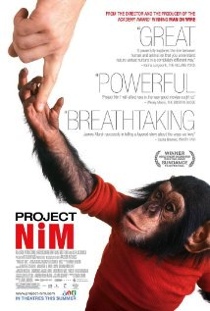 38. Project Nim
38. Project Nim
Year: 2011
Director: James Marsh
In Man on Wire, director James Marsh recounted French tightrope walker Philippe Petit’s exploits, most notably his unauthorized 1974 walk between the Twin Towers that held most of the city of New York breathless for an entire morning. In Project Nim, a team of researchers (only one year earlier, in 1973) sets out to accomplish an even more audacious and thrilling goal—to teach a chimpanzee human sign language and initiate meaningful dialogue. Technically the film is flawless. But the really compelling angle for the film is the very idea of inter-species communication.—Michael Dunaway
 37. Gus Van Sant’s Last Days
37. Gus Van Sant’s Last Days
Year: 2006
Director: Gus Van Sant
Actor Michael Pitt portrays the lost figure at the center of Last Days, a stark walk through a dying artist’s final moments inspired by the death of one of rock history’s great tragic heroes. Like Van Sant’s prior films, Gerry and Elephant, an improvised script and freedom from routine cinematic language gives Last Days a hyper-real, oddly poetic flow of events Pitt plays Blake, first seen stumbling alone in the wilderness, a caveman in pajamas and sunglasses. Through a random series of events we learn that he’s a rock musician living in a once-elegant mansion gone seedy with neglect, with a small entourage of housemates who incessantly seek him for advice, money and affirmation. Presumably stoned beyond repair, Blake spends Last Days dodging so-called friends, bandmates and other intrusions of the outside world, unable to secure the peace he craves. There’s no doubt that Blake is intended to recall the late Kurt Cobain; Pitt’s emaciated frame, bedraggled blonde shag, pink sunglasses and general demeanor is sometimes uncanny in its resemblance to the long-mourned star. But the Last Days story has little in common with the facts of the case, keeping only the essential themes. Pitt submerges so deeply into the swampy depths of Blake’s character that he ends up somewhere beyond acting. The film benefits from Pitt’s real-world rock ’n’ roll experiences with Thurston Moore also on board as music consultant.—Fred Beldin
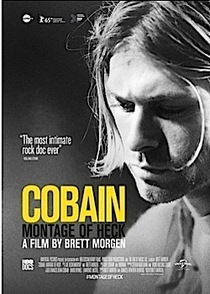 36. Kurt Cobain: Montage of Heck
36. Kurt Cobain: Montage of Heck
Year: 2015
Director: Brett Morgan
Despite its limitations, the documentary Kurt Cobain: Montage of Heck is an honorable attempt to restore the gunk, anger and volume to Nirvana’s legacy—and to Cobain’s as well. Dead at 27—the same age when Janis Joplin, Jimi Hendrix and Jim Morrison died—the songwriter-guitarist is remembered as a talented, troubled stalwart, but The Kid Stays in the Picture director Brett Morgen wants us to look closer at Cobain, and what Montage of Heck reveals isn’t all that pretty. A junkie, a pain in the ass, an inveterate malcontent: This is the Cobain we see in Morgen’s documentary. Yet, by emphasizing the messy, ugly humanness of his subject, Morgen manages to make him heroic and tragic, too. Though Montage of Heck is undoubtedly geared to fans, it gives fans reason to be grateful for this guy and this band all over again. (Read the full review here.) —Tim Grierson
 35. Sweeney Todd: The Demon Barber of Fleet Street
35. Sweeney Todd: The Demon Barber of Fleet Street
Year: 2007
Director: Tim Burton
Whoever said murder couldn’t be wonderfully melodic? Although the Tony-winning Sweeney Todd: The Demon Barber of Fleet Street was right up Tim Burton’s alley, his 2007 film took his macabre look at a homicidal English barber and made it fun. Here’s another Burton flick that relies on the tested chemistry of Johnny Depp and Helena Bonham Carter, but we also see great performances from Alan Rickman as the corrupt Judge Turpin and Sasha Baron Cohen as a rival barber. The film sees Burton’s on-screen gruesomeness at an all-time high, but it’s all balanced out by some infectious musical numbers.—Tyler Kane
 34. Milk
34. Milk
Year: 2008
Director: Gus Van Sant
Sean Penn took home a Best Actor Oscar, and writer Dustin Lance Black an Original Screenplay statue, for their work in Gus Van Sant’s vibrant snapshot of slain San Francisco city supervisor Harvey Milk, California’s first openly gay individual to be elected to public office. As the activist-turned-politician—who was assassinated in November 1978 by fellow city supervisor Dan White—Penn is characteristically intense, but there’s a singular ebullience to his portrayal of a public servant at a watershed moment for civil rights, a decade after Stonewall and with four decades to go until marriage equality. In Penn’s chameleonic characterization, Milk’s journey is a personal one writ large, a midlife crisis that prompted landmark campaigns—and not just for LGBTQ rights. Van Sant captures the energy of San Francisco’s counterculture, especially in the Castro District, with Milk’s spirited calls for action igniting the community. Despite his understandable martyrdom, Penn doesn’t shy away from Milk’s flaws, tantrums and lapses in judgment. It’s a fully fleshed, utterly astonishing turn in a career of them. The ensemble cast is uniformly outstanding; you can feel Josh Brolin at once imploding and exploding as the repressed White, and Emile Hirsch, Diego Luna, James Franco, Victor Garber and Denis O’Hare, as Milk’s assorted lovers and colleagues, lend emotional depth and purpose to his journey. One of the best, most moving biopics in recent memory. —Amanda Schurr
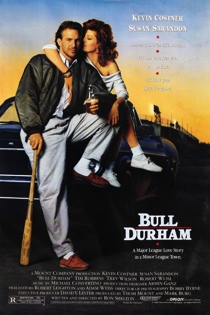 33. Bull Durham
33. Bull Durham
Year: 1988
Director: Ron Shelton
I believe in ridiculous names like Crash Davis and Nuke LaLoosh. I believe in romantic comedies about giving up on a certain phase of your life where characters stand up and deliver cliched “I believe” speeches that, despite being borderline cheesy, somehow ring completely true. And yes, I too believe there should be a Constitutional Amendment banning Astroturf and the designated hitter. I believe in Bull Durham. The most engaging presentation of the minor-league life on film—and a pretty salute to baseball, in general—this first installment in the unofficial Kevin Costner Baseball Trilogy proved that baseball could equal big box office. Costner and Susan Sarandon anchor this film that does its part to engender a love for the game and the people who court it.—Bonnie Stiernberg & Michael Burgin
 32. What We Do in the Shadows
32. What We Do in the Shadows
Year: 2014
Directors: Jemaine Clement and Taika Waititi
Who knew that the undead fight over dirty dishes or primp before going out? It’s these types of little moments, paired with almost throwaway bits of dialogue, that turn the vampire mockumentary What We Do In the Shadows into a sublime comedy. As written, directed and starring Jemaine Clement, half of the comedy duo Flight of the Conchords, and Taika Waititi, writer and director of Boy, New Zealand’s highest-grossing film, the film not only tweaks the vampire genre by adding a number of mumblecore elements, but also pays a tongue-in-cheek homage to its history. The film opens with a series of title cards that credit the New Zealand Documentary Board and also explain the film’s premise: A documentary crew was given full access to follow a secret society based in Wellington, New Zealand during the months leading up to the Unholy Masquerade Ball, the social event of the year. The intertitles also note that the crew was assured protection from their subjects, and issued crucifixes, just in case. What We Do In the Shadows played the festival circuit after its Sundance debut, and picked up a number of audience awards in its wake. We can see the appeal: While there’s really not that much action or bloodletting in the fake documentary, the laughs are definitely authentic.—Christine N. Ziemba
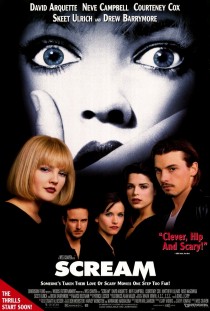 31. Scream
31. Scream
Year: 1996
Director: Wes Craven
Before Scary Movie or A Haunted House were even ill-conceived ideas, Wes Craven was crafting some of the best horror satire out there. And although part of Scream’s charm was its sly, fair jabs at the genre, that didn’t keep the director from dreaming up some of the most brutal knife-on-human scenes in the ’90s. With the birth of the “Ghost Face” killer, Craven took audiences on a journey through horror-flick fandom, making all-too-common tricks of the trade a staple for survival: sex equals death, don’t drink or do drugs, never say “I’ll be right back.” With a crossover cast of Neve Campbell, Courteney Cox, David Arquette, Matthew Lillard, Rose McGowan and Drew Barrymore (okay, for like 10 minutes), Scream arrived with a smart, funny take on a tired genre. It wasn’t the first film of its kind, but it was the first one to be seen by a huge audience, which went a long way in raising the “genre IQ” of the average horror fan.—Tyler Kane
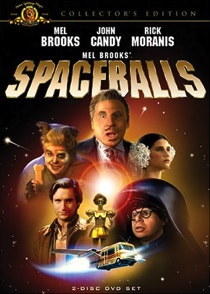 30. Spaceballs
30. Spaceballs
Year: 1987
Director: Mel Brooks
Originally perceived as one of writer/director Mel Brooks’ lesser works, this loving send-up of the sci-fi/fantasy genre (specifically, Star Wars) has, over the years, wormed its way into the hearts of a new generation of fans who caught it on video. “May the Schwartz be with you,” “Ludicrous Speed,” “Mawg”—if these are all terms that mean nothing to you then it’s high-time you checked this movie out and see what all the fuss is about.—Mark Rozeman
 29. Kung Fu Panda
29. Kung Fu Panda
Year: 2008
Directors: Mark Osborne, John Stevenson
Like Stephen Chow’s Kung Fu Hustle, DreamWorks’ Kung Fu Panda punctuates its light-hearted, comedic tone with surprisingly poignant moments along with nonstop homages to a giant list of truly classic Kung Fu films, often scene by scene. In the end, I had to give it to Kung Fu Panda as the more tightly constructed film, though really, they both might as well share this spot with the sheer amount of love for the genre that comes through when watching either film. Jack Black voices Po’s (totally awesome) journey from bumbling martial arts fanboy to unlikely hero with such sincerity that it’s hard not to get swept along, especially given the equally strong performances by Dustin Hoffman as the perpetually exasperated Master Shifu and Ian McShane as the menacing Tai Lung.—K. Alexander Smith
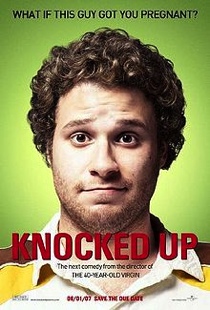 28. Knocked Up
28. Knocked Up
Year: 2007
Director: Judd Apatow
Sure, there’s a graphic scene involving a baby coming out of a womb. Yes, there’s nudity and plenty of expletives. And okay, it is sort of strange how a schlub like Seth Rogen can get a girl like Katherine Heigl. Even so, there’s an inherent sweetness to Knocked Up that make it such a pleasure to watch. Judd Apatow’s treatment of the supporting characters, like Paul Rudd and Leslie Mann, also help catapult the romantic comedy into one of the genre’s very best.—Jeremy Medina
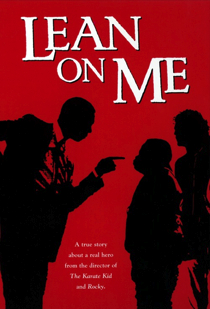 27. Lean on Me
27. Lean on Me
Year: 1989
Director: John G. Avildsen
Before he started playing God, Morgan Freeman took on the god-like Joe Clark (based on the real life Joe Louis Clark) and warmed our hearts as the fun-loving principal who turned an inner-city school around. Just kidding. Principal Joe Clark didn’t play around, and if you’ve seen the film (from Rocky director John Avildsen), you probably still have nightmares about him catching you in the bathroom and making you sing the Fair East Side song or dragging you to the top of the school building and telling you to stop doing drugs—or jump. Gotta love that Joe Clark. But the reality is, Lean On Me is a refreshing take on the old, well-meaning-white-person-comes-in-to-save-poor-underprivileged-black-kids tale. There are no well meaning white people starring in this dark but inspiring story, and the main character’s methods are so outrageous, it’s not always clear whether he’s a villain or a savior. And that’s the point. This isn’t about a superhero-like character saving the day. Clark is a plain old, flawed human, risking his own sanity and freedom to save the very children American society says aren’t worth the effort.—Shannon Houston
 26. The Piano
26. The Piano
Year: 1993
Director: Jane Campion
Without ever saying a word, Holly Hunter still has one of the great performances of the early ‘90s. The Piano also introduced the rest of the world to New Zealand’s Jane Campion, creator of Top of the Lake, and to actress Anna Paquin (True Blood). Set in 1850s New Zealand, the film tells of a mute, young mother trapped in arranged marriage and the farmworker (Harvey Keitel) who falls for her.—Josh Jackson
 25. Inherent Vice
25. Inherent Vice
Year: 2014
Director: Paul Thomas Anderson
Inherent Vice shares Thomas Pynchon’s instability: always in flux, it perseveres as a screwball elegy to a lost time, refusing to function solely as a stoner comedy or a serious drama or any one thing. Anderson is mannered enough to shift from one tone to another organically, making the whole seem part of one larger kaleidoscopic feeling rather than a series of disjointed vignettes, and that alone is a huge accomplishment. That he also characteristically includes a series of unforgettable scenes makes this film one that must be seen again.—Jeremy Mathews
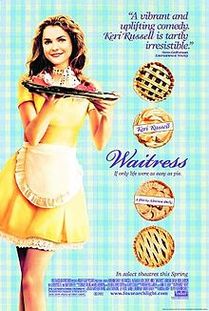 24. Waitress
24. Waitress
Year: 2007
Director: Adrienne Shelly
Every bit as comforting as the delicious, candy-colored pies Keri Russell bakes in the film, Waitress is a honeyed little comedy that should speak to anyone who has ever felt stuck in a situation. And as good as Russell is, the film’s true star is its writer/director/co-star, the late Adrienne Shelly. Murdered before the film saw its release, the film stands as a wonderfully bittersweet testament to her considerable talent.—Jeremy Medina
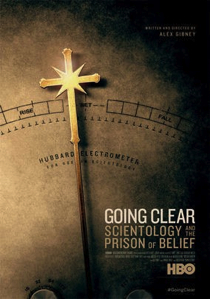 23. Going Clear: Scientology and the Prison of Belief
23. Going Clear: Scientology and the Prison of Belief
Year: 2015
Director: Alex Gibney
Alex Gibney’s up-close examination of Scientology, its practices and the controversies that surround the religion founded by science-fiction writer L. Ron Hubbard is also a stirring portrait of eight former adherents, who tell their stories of how they came to practice Scientology and their reasons for leaving the church. While much of the ideological content in Gibney’s film has circulated on the Internet for years, there were still a number of items to be learned from watching the film and hearing from the men who made it. While Going Clear is part exposé and part condemnation of a controversial religion, director Gibney has said that he was most interested in “the journey of the key characters in the film … and how people got lost in the ‘prison of belief.’”—Christine N. Ziemba
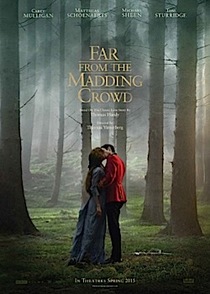 22. Far From the Madding Crowd
22. Far From the Madding Crowd
Year: 2015
Director: Thomas Vinterberg
Try not to judge Thomas Vinterberg’s adaptation of Thomas Hardy’s Far From the Madding Crowd as a product of Dogme, the Dutch-born filmmaking movement that Vinterberg co-founded with career bad-boy Lars von Trier in 1995. A Victorian-age romance yarn about female independence that honors the law of Chekhov’s gun seems a poor fit for a philosophy created in the pursuit of cinematic purity. But Far From the Madding Crowd isn’t a Dogme film. It’s a latter-day Thomas Vinterberg film, and a damn good one at that. Vinterberg is best-loved for his excellent 2012 film The Hunt, a story of communal insularity and the fracturing effect a lie can have on the body politic. With Far From the Madding Crowd, he again studies the effects of rumors and murmurs on a person’s reputation, but that element is less prominent in Hardy’s novel than his profound examination of feminine will.—Andy Crump
 21. Bessie
21. Bessie
Year: 2015
Director: Dee Rees
It may have taken 20 years to make it, but when Bessie finally arrived, she came, she saw and she conquered. The HBO film has garnered 12 well-deserved Emmy nominations, with Queen Latifah, co-stars Michael Kenneth Williams and Mo’Nique, and director Dee Rees all getting the nod. One scene in particular—with the reverse paper bag test—is one of Bessie’s finest moments, as it encompasses all that makes the HBO film so wonderful. There’s Queen Latifah in all her glory, finally setting up her own tour and making sure everyone knows who’s boss. There’s the hilarity when she lets down one of the hopefuls auditioning—“You must be darker than the bag to be in my show!” After all, Bessie is an incredibly funny movie at times. And there’s the whole inversion of the brown paper bag test. Where Bessie Smith grew up in a world that demanded black women performing back-up be lighter than a brown paper bag, Bessie makes up a new rule that gives her back some agency and sets a different tone (literally and figuratively) for her showcase. Bessie was, in no way, your average blues performer and for that reason Lili Fini Zanuck and her husband Richard D. Zanuck knew they couldn’t just deliver your average black-performer-who-grew-up-poor-and-made-it-big biopic. The familiar story of a talented woman done in by a man (or many men), or childhood tragedies, or her own celebrity was not Bessie’s story—she wasn’t lighter than a brown paper bag, and, thankfully, wasn’t presented as such.—Shannon M. Houston
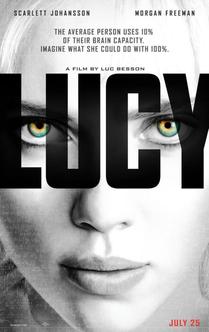 20. Lucy
20. Lucy
Year: 2014
Director: Luc Besson
Who knew Luc Besson still had a movie like Lucy in him? It’s a startling blast of cinematic zeal and philosophical provocation—the work of someone fully engaged by the medium. Somewhat improbably, it’s also an ideal culmination of a sci-fi trilogy Scarlett Johansson may not have even realized she was making. In Her, Under the Skin and now Lucy, the young veteran has not only delivered some of the finest work of her career, she’s found a trio of characters in conversation about what it means to be human through the eyes of an outsider. —Geoff Berkshire
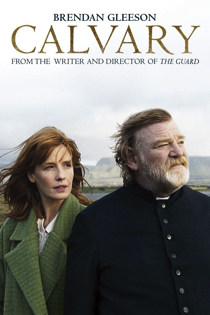 19. Calvary
19. Calvary
When Brendan Gleeson gets together with John Michael McDonagh, magical things happen. The two first teamed up in 2011 for the black comedy, The Guard, which, though it gets dark when it needs to, showcases Gleeson’s easy charm, humor and ability to absolutely take control of the frame. He’s proven time and time again that he’s one of the best and most underappreciated character actors working today. Their latest collaboration, Calvary, takes a different approach than their last endeavor, but is no less impressive, illustrating again that Gleeson is equally adept in the lead of this character study as in any supporting roles.—Brent McKnight
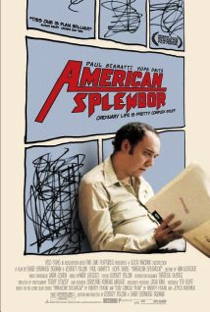 18. American Splendor
18. American Splendor
Year: 2003
Directors: Robert Pulcini, Shari Springer Berman
Harvey Pekar’s “American Splendor” books are fascinating in that Pekar believed that even the most mundane and seemingly uncomplicated lives were worth documenting. American Splendor does a great job of showcasing that theory by using real footage of Pekar, fictionalized versions and even the comic version to create a cohesive whole that documents a fascinating, albeit ordinary life.—Ross Bonaime
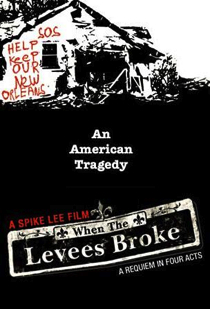 17. When the Levees Broke: A Requiem in Four Acts
17. When the Levees Broke: A Requiem in Four Acts
Director: Spike Lee
Year: 2006
Part indictment of FEMA and the U.S. Army Corps of Engineers, part celebration of the unfailingly resilient spirit of New Orleans, Spike Lee’s four-hour-long look at “The City That Care Forgot” a year after the near-obliteration of Hurricane Katrina is an exhausting, comprehensive, worthwhile experience. There’s a reason so many residents refer to the catastrophe as the “Federal flood” and not Katrina itself—Lee’s Peabody-winning doc examines the systemic failure at all levels of government to maintain the storm barriers and deal with the consequences of their negligence. It’s political, it’s racial, it’s accusatory and it’s utterly compelling viewing. It’s also inspiring, thanks to the resolute locals shown struggling to survive and rebuild in the disaster’s aftermath. This is very much a Spike Lee joint; don’t expect anyone in the Dubya administration to come away without a tongue-lashing. But the heart and soul of the doc is the people of New Orleans, and they won’t let you down—on the contrary.—Amanda Schurr
 16. Brick
16. Brick
Year: 2005
Director: Rian Johnson
High-school sleuths are popular on TV—Veronica Mars, Buffy the Vampire Slayer, and The Hardy Boys, to name a few. Social cliques and hormonal tensions coupled with deceptively blasé suburban backdrops tend to refresh gumshoe maneuvers, even as murderous intrigue adds zap to all the Clearasil melodrama. But Brick, director Rian Johnson’s crackling debut, shakes up a genre that’s grown a bit routine, while indulging our familiarity with it. Joseph Gordon-Levitt plays Brendan, the smart, loner kid whose broken heart leads him to the local teenage underworld when his ex-girlfriend (Lost’s Emilie de Ravin) goes missing. The extremely mannered dialogue evokes the clipped lingo of Philip Marlowe, cross-wired with David Mamet. Southern California kids who look like they should be in line for a Gwen Stefani show drop slang like “duck soup” (easy pickings) and “bulls” (cops) as if they were studying James Ellroy in English class. Like those punches that lunge across the screen and send Brendan reeling toward his next clue, it’s a left-field surprise.—Steve Dollar
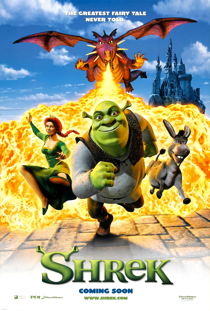 15. Shrek
15. Shrek
Year: 2001
Directors: Andrew Adamson, Vicky Jenson
Dreamworks announced itself as an animation powerhouse with this wonderful twist on the Beauty and the Beast saga. It’s wickedly funny thanks to a crisp adaptation of William Stieg’s picture book and voice acting from SNL vets Mike Myers and Eddie Murphy, who are given the whole of fairyland to roam. Cameron Diaz’s princess as ninja warrior was a cutting response to some of Disney’s delicate flower leads—just one of the many subtle digs at the Disney-industrial complex. The film manages to satirize the tropes of children’s movies without losing its heart, an apt parallel to its titular ogre’s gruff exterior/softie interior dynamic.—Josh Jackson
 14. Brokeback Mountain
14. Brokeback Mountain
Year: 2005
Director: Ang Lee
While his performance as the Joker in The Dark Knight certainly deserves the acclaim it’s been given, Heath Ledger’s true tour de force was his understated work in Brokeback Mountain. Ledger brought a driving force to the movie which complimented its contemplative tone and showed a true, classical brilliance in acting that left you convinced that his character was real.—Sean Gandert
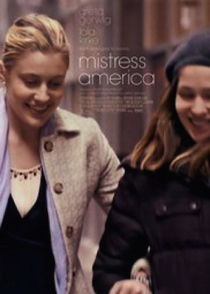 13. Mistress America
13. Mistress America
Year: 2015
Director: Noah Baumbach
Mistress America is so far Noah Baumbach’s most vivacious output, fiercer in its convictions and sense of self than anything to come before. He treats it with equal affection for his past films, but is less protective—it’s gassed with a smiling fuck-you attitude, revved up by an ’80s Euro synth-pop score from husband-wife duo Dean Wareheim and Britta Phillips, who provided the music for Baumbach’s Squid and the Whale in 2005, arguably his magnum opus. As exhausting as his characters can be, both agonizing in their belligerence and endearing in their complete oblivion, the adoration with which he writes them and the ferocious wit for which he’s revered make Baumbach one of contemporary cinema’s greatest character sketchers—and Mistress America falls right in line. (Read the full review here.) —Melissa Weller
 12. Snatch
12. Snatch
Year: 2000
Director: Guy Ritchie
Love or hate him, Guy Ritchie has redefined the gangster genre with his hyper-stylized touch. Snatch may be a lesser remix of Lock, Stock and Two Smoking Barrels, but it boasts a multifaceted plot, frenzied action and dazzling eye candy. And how can you not love characters with names like Franky Four Fingers, Bullet Tooth Tony and Doug the Head?—David Roark
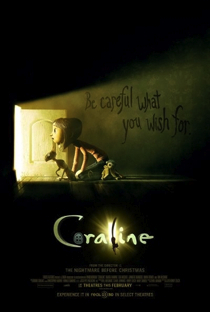 11. Coraline
11. Coraline
Year: 2009
Directors: Henry Selick
Director Henry Selick matches the Gothic whimsy of Nightmare Before Christmas and adds even more compelling emotional content with this adaptation of Neil Gaiman’s novella. An unhappy little girl discovers an alternate reality that seems to offer all the magic and wonder her real home lacks, only to discover the sinister implications behind the candy-colored exteriors. Gaiman’s inventive approach to fairy-tale rules matches Selick’s luminescent colors and blend of everyday emotions and dream-like wonders. Perhaps the greatest stop-motion film ever, it even looks great in 3D.—Curt Holman
 10. Miller’s Crossing
10. Miller’s Crossing
Year: 1990
Directors: Joel and Ethan Coen
Like O Brother Where Art Thou a decade later, Miller’s Crossing is a terrible choice for those who prefer their Coen films a little less Coen-ish. It’s highly stylized, confusing and often ridiculous. But the parts that do work are glorious—Gabriel Byrne’s casual indolence, Albert Finney’s blustering menace, and most of all, John Turturro’s masterful painting of the spectacularly weaselly Bernie Bernbaum. “Look in your heart!”—Michael Dunaway
 9. Juno
9. Juno
Year: 2007
Director: Jason Reitman
At the center of Diablo Cody’s quickly drafted first movie script is a teenage girl going through a difficult situation and handling it with more maturity and aplomb than most of the adults around her. Ellen Page’s Juno is a delightful counter to vapid high-school stereotypes that litter the genre, but the challenges of pregnancy and the arrested development of Jason Bateman as the potential adoptive father take the precocious teenager in way over her head. The film’s honesty in tackling these issues makes its many laughs well-earned.—Josh Jackson
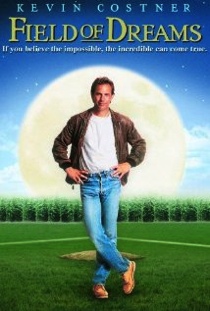 8. Field of Dreams
8. Field of Dreams
Year: 1989
Director: Phil Alden Robinson
A uniquely American fantasy, Field of Dreams solidified Kevin Costner’s status as a rugged Everyman, A-list actor, and perhaps the only man allowed to star in baseball films that make money. And though “If you build it, he will come” quickly raced up the charts of “Most Clichéd Phrasing,” it’s also true that the film’s ending is among the best opportunities to see grown men cry. —Michael Burgin
 7. The Iron Giant
7. The Iron Giant
Year: 1999
Director: Brad Bird
Brad Bird’s feature debut was traditional 2-D animation when computer animation was the craze, released by studio folk who didn’t realize just how special a film they had on their hands. Luckily, The Iron Giant received its due recognition on home video. Set in the 1950s and drawing off the nuclear fears of the time, it incorporates the hallmark of the era’s science-fiction—a giant metal robot—into a touching coming-of-age story. Bird effortlessly moves between riotous comedy (such as young Hogarth’s efforts to hide his enormous new robot friend from his mother), high-spun action and poignant moments of fear and friendship.—Jeremy Mathews
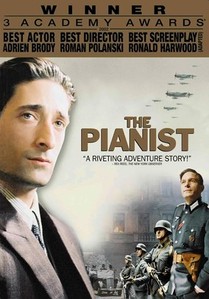 6. The Pianist
6. The Pianist
Year: 2002
Director: Roman Polanski
While many great performances rely on dramatic and affecting dialogue, Adrien Brody’s turn as real life musician Wladyslaw Szpilman in Roman Polanski’s Holocaust drama The Pianist is hushed, a sullen-eyed lost soul hanging on to a world cloaked in gray. As the title character, Brody became a living skeleton, an all-too-real representation of one of history’s darkest periods.—Justin Jacobs
 5. One Flew Over the Cuckoo’s Nest
5. One Flew Over the Cuckoo’s Nest
Year: 1975
Director: Milos Forman
There’s a reason this film swept the Oscars with Best Picture, Best Director, Best Actor, Best Actress and Best Screenplay. Jack Nicholson and Louise Fletcher anchor a dynamic cast in Forman’s New Hollywood masterpiece about a state mental hospital.—Josh Jackson
 4. Mad Max: Fury Road
4. Mad Max: Fury Road
Year: 2015
Director: George Miller
Three decades since we last visited George Miller’s arid, dystopian world, the latest installment stars Tom Hardy as Max Rockatansky with Charlize Theron as his co-lead—a casting coup. But the long wait had Miller swinging for the fences. Try naming a modern blockbuster that has as much chutzpah as Mad Max: Fury Road. You can’t, because there isn’t one. This is what happens when you lay out all your crazy on the screen at once: glorious, crackling entertainment. Every single dollar of its reported $150 million budget is in the frame at all times, but Miller is so unpretentious that you won’t catch the price tag. Real people cruise in real vehicles across real expanses of desert. When the film does lean on computers, it’s to fill in the margins or summon the occasional dust storm. Miller defines his aesthetic through physical texture, tells story through action, and shows no interest in the routine of contemporary Hollywood spectacle. What’s more, Mad Max: Fury Road is an inclusive effort that invites us to join its heroes in breaking down gender dichotomies. George Miller has made a phenomenal action film with a righteous cause, a movie that layers smart commentary atop jaw-dropping set pieces. May he ride eternal, shiny and chrome.—Andy Crump
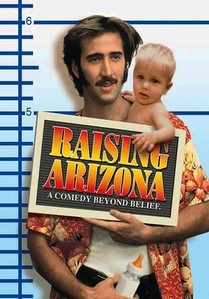 3. Raising Arizona
3. Raising Arizona
Year: 1987
Director: Joel Coen
Understated dramatic performances are all well and good, but it takes pinpoint control on behalf of both directors and cast to deliver the sustained overstated performances found throughout Raising Arizona. From its opening courtship sequence to the struggles of H.I. (Nicholas Cage) and Ed (Holly Hunter) to form a family by borrowing an “extra” from another to the final battle with the Lone Biker of the Apocalypse, the Coen brothers’ film remains an immensely beguiling and quotable farcical fable.—Michael Burgin
 2. Magnolia
2. Magnolia
Year: 1999
Director: Paul Thomas Anderson
Paul Thomas Anderson’s magnum opus follows multiple plotlines, while still deeply developing each of the film’s many principle characters, played more than ably by some of the decade’s greatest actors—Julianne Moore, William H. Macy, Philip Seymour Hoffman, Jason Robards and Alfred Molina, to name but half. Father/child relationships are explored, but the themes throughout are grand ones. Add in Tom Cruise’s best performance of his life and a killer soundtrack from Aimee Mann, and you have one of the greatest movies of the 1990s.—Josh Jackson
 1. The Godfather Epic
1. The Godfather Epic
Year: 1972
Director: Francis Ford Coppola
What’s there to say about this cinematic staple that hasn’t already been said? Francis Ford Coppola’s classic crime drama epitomizes the word “epic” in every way. The performances, the characters, the narrative, the scope, the setting, the score—everything comes to the screen so, well, epically. For that and a whole slew of other reasons, The Godfather should “have your loyalty” as the greatest gangster film of all time. The second chapter—released just two years later—set a new precedent for sequels by proving just as triumphant. Anchored by prevailing performances from Al Pacino and Robert De Niro, the follow-up carries on the mafia saga and explores the parallels between father and son. It’s another tour de force with epic proportions. The Godfather Epic edits together the first two films of the trilogy into one long, glorious viewing experience.—David Roark